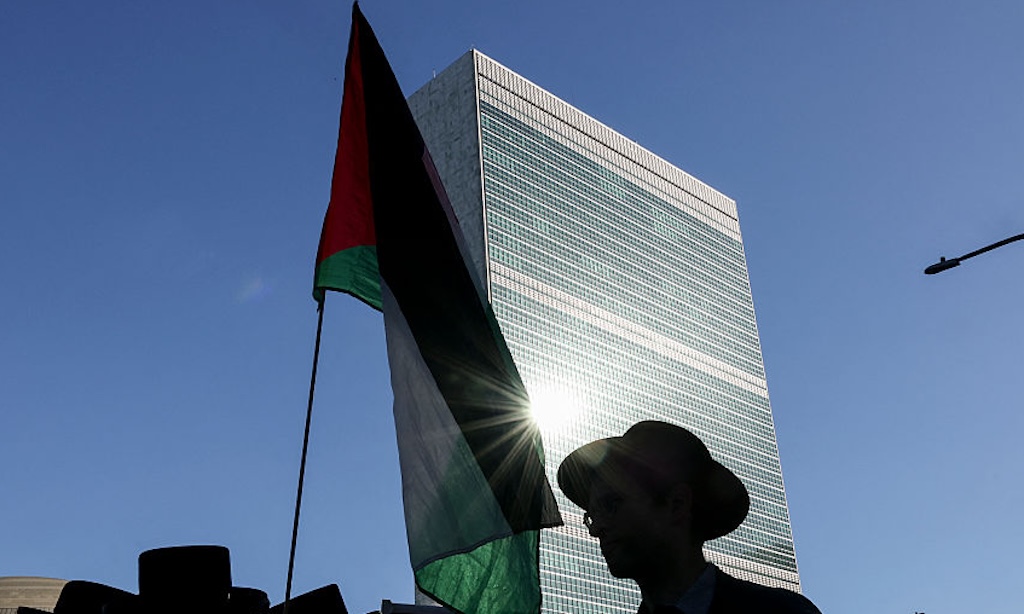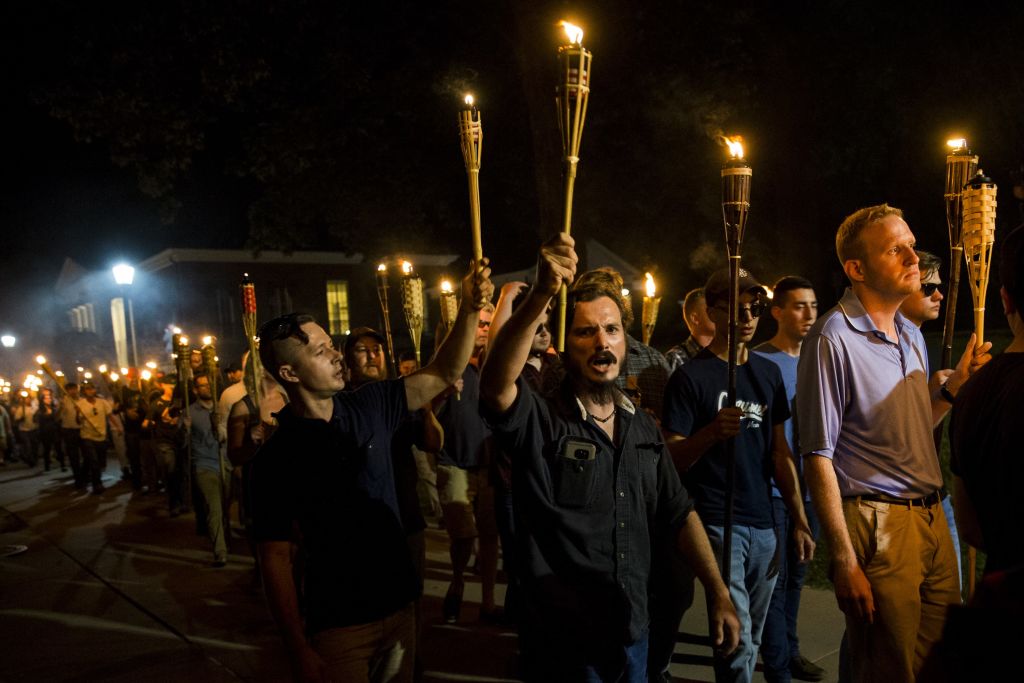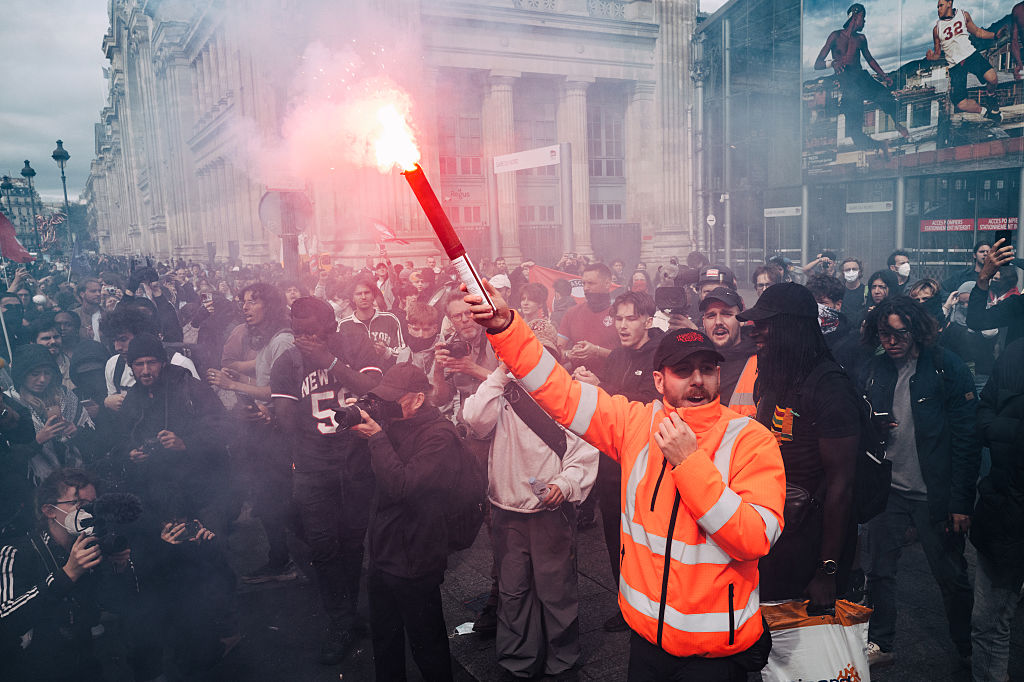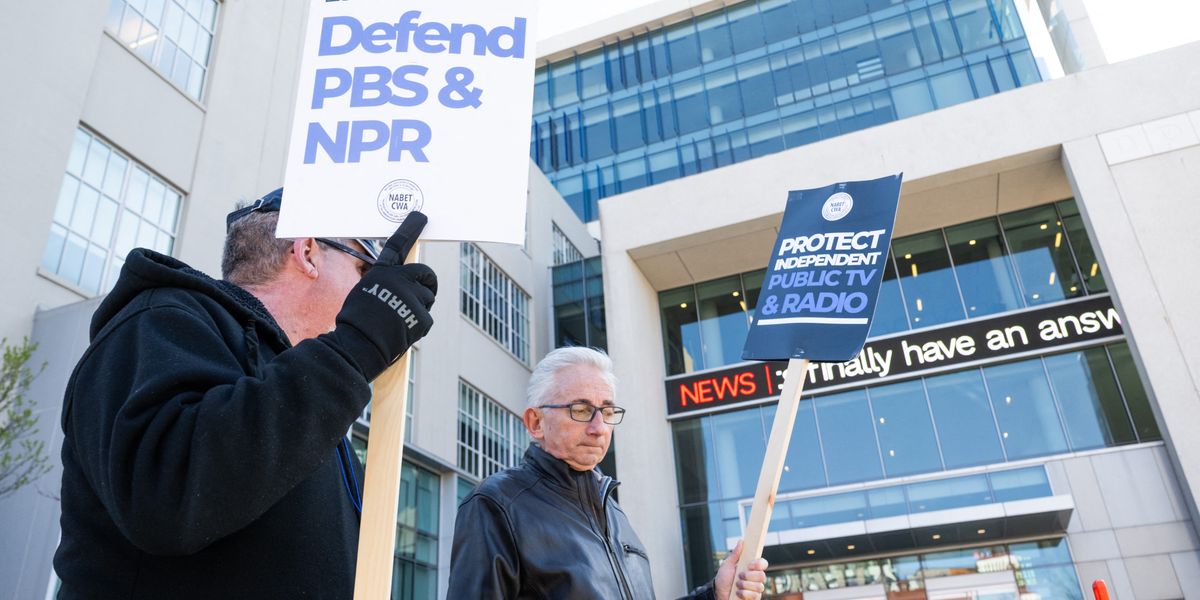
Defenders of Public Media Vow Fight Against Trump Assault on ‘Cherished’ NPR and PBS | Common Dreams
April 15, 2025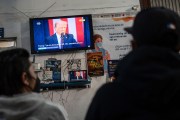
DHS shuts ‘open door’ for women and queer immigrants to report abuse, advocates say
April 15, 2025
Yesterday marked the ninety-fifth anniversary of Vladimir Mayakovsky’s suicide. It is particularly significant today that World War I played such a key role in shaping him. This war led to the revolution in the former Russian Empire, which determined the poet’s future life — and death — as well as the history of his country and the world beyond.
But Mayakovsky also came to World War I with the impressions made on him by his childhood. This included growing up in Georgia, on the outskirts of the empire; the revolutionary unrest of 1905, which in his home country took an anti-colonial color; poverty and a hard life in Moscow; participation in the Bolshevik party, prison, and his first artistic experiments. He would end up at an antiwar position — but not before a fascination with odious and militaristic ideas.
The first war that Mayakovsky had seen at a conscious age was the Russian-Japanese conflict of 1904–5. Against the backdrop of the failures of the Russian army, the anti-imperialist movement grew. The poet later mentioned his sympathies for the Georgian national movement at that time. He participated in gatherings and demonstrations. His class tutor recalls how Mayakovsky changed dramatically, became “excited, with burning eyes, not noticing anything around.”
The Russian Empire’s defeat in the war was one of the causes of the 1905 revolution — a workers’ uprising in Moscow and other regions, which for the first time formed a system of soviets and had to be put down by the tsarist army. For Mayakovsky, “It was a revolution. It was a poem. The poems and the revolution somehow came together in my head.” Under the political influence of his older sister Lyudmila, he joined the Bolsheviks.
In 1906, with his father’s death, Mayakovsky moved to Moscow with his mother and two sisters. “The huge city lived its own life, and we among millions of people decided to fight for their existence, for their future,” recalled his mother, Alexandra Alekseevna. The future poet earned a living doing artistic crafts and continued to study at school, but read mainly political literature. He participated in propaganda work, tried to write poetry, and ended up in prison, where he reflected on the relationship between art and political struggle. It seemed to him that the Marxist method could not succeed without a new aesthetics.
What could I put up in opposition to the old world aesthetics that had descended on me? Didn’t the revolution demand serious schooling? I looked in on Medvedev, at that time still my Party comrade, and said I wanted to produce a Socialist art. Seryozha laughed for a long time.
I nevertheless thought that he had underestimated my guts.
I gave up Party work and sat down to my studies.
So, the revolution needed a new aesthetics, and this demanded complete dedication. In early 1910, out of prison, Mayakovsky left the Bolshevik party and party politics as such. He gradually gained fame as an artist and poet in the Moscow creative milieu, oriented toward the Western avant-garde, including Futurism, which had emerged in 1909 in Italy.
Here is how Mayakovsky describes himself and his close associate, the ideologist of Russian Futurism David Burliuk in those years:
David has the anger of a master who has overtaken his contemporaries, I have the pathos of a socialist who knows the inevitability of the collapse of old things. Russian Futurism was born.
The Russian Futurists (the so-called Budetlyans), like their Italian counterparts, wanted to overcome the cult of the classics and debunked the artists of previous generations. However, while the Italians praised a technicist modernity and future, singing the praises of industry and war, the Budetlyans mainly appealed to a preclassical and premodern archaism. Ultimately, the deliberate aggressiveness of the Italian Futurists was rejected by some of their Russian associates. “[We are for] the autonomy of Russian Futurism. [Italian Futurists are] the people of the fist, the brawlers, [we know] our contempt for them,” Mayakovsky wrote. This was echoed by his colleague Alexei Kruchenykh:
There may be dissent (dissonance) in art, but there must be no rudeness, cynicism and insolence (what the Italian Futurists preach), for you cannot mix war and brawling with creativity.
Perhaps this attitude — “you cannot mix war and fighting with creativity” — would influence the further political evolution of Futurism. But on the eve of World War I, Russian Futurism was highly contradictory. It featured an aggressive expansionist pathos — Russian Futurists presented themselves as the avant-garde of the East, ready to conquer Europe, to bring it a “special sense of material” hitherto unknown to it. This was coupled with an anarchic spirit, suspicious of any state boundaries and aggression based on a narrow understanding of nation or race. But the course of history pushed the Russian Futurists, including Mayakovsky, to make their choice.
In August 1914, World War I broke out. This is how the Bolsheviks — Mayakovsky’s former comrades — reacted to this event:
The bourgeois press, venal and groveling before the rulers of life, tries with all its might to pour the poison of fratricidal nationalism into the masses in order to stupefy them and lead them unquestioningly to the slaughter. [. . .]
The European war will leave behind it hundreds of thousands, perhaps millions, of corpses. And it will shake and disrupt the political systems of states and their economic foundations.
In late July, in his poem “War’s Declared,” Mayakovsky had depicted an urban landscape, full of grim forebodings. But as soon as the cannons began to rumble, he took a pro-war stance.
For biographer Alexander Mikhailov, “[A]t this time he was no longer associated with the Bolsheviks, fell under the influence of official propaganda, and failed to understand the political meaning of events.” Mayakovsky made his living with lubok (a traditional Russian type of graphics with a caption) with a patriotic orientation.
The Austrian surrendered Lvov to the Russians,
What are the hares against the lions!
This was no joke, nor just a way to make money. In his articles of this time, the poet combined a pro-war political program (“Russia is fighting to not become the bread bag of the West”) and cultural anti-Westernism. In essence, this was the politically radicalized agenda of the Russian Futurists in its right-wing, protofascist version.
War is not senseless killing, but a poem about a liberated and exalted soul. . . . The human basis of Russia has changed. Powerful people of the future have been born. . . .
With the outbreak of war, the poet’s opposition between the artist and the common man took on a new meaning. From the denial of the culture of the old “intelligentsia” came appeals to the crowd.
Take your proudest idea, the most beloved idea of you, your Vereshchagins, Tolstoys — don’t kill a man — and take it to the streets of today’s Russia, and the crowd, the magnificent crowd, will shred your grey beards on the stones of the pavement.
The crowd, here, was just material serving the ambitions of an artist or a politician. Mayakovsky’s anti-bourgeois stance and thirst for collectivism was now directed against the idea of human individuality as the measure of all things.
In the mass of flying deaths, one cannot distinguish which is mine and which is someone else’s. There in war everyone breathes at the same time, and that is why there is immortality.
He wrote of
[t]he commonality for all men of the same gigantic struggle, which has destroyed for today both opinions, parties and classes. . . .
Talk of the country’s struggle for existence was easily combined with imperial, messianic calls to “dictate to the decrepit West the Russian will, the defiant will of the East!”
The Russian nation, the one nation which, by interrupting a driven fist, can make the face of the world smile for a long time to come.
The rejection of the old world, with its art and the idea of human individuality, and the cult of force and technology led Mayakovsky, following Italy’s Filippo Tommaso Marinetti, to the aestheticization of war.
As a Russian, every effort of a soldier to tear out a piece of enemy land is sacred to me, but as a man of art, I must think that perhaps the whole war is invented only for someone to write one good poem.
The aestheticization of war is one of the important features of the fascist paradigm, about which the philosopher Walter Benjamin would write twenty years later. The democratization of art, and the overcoming of the unique “aura” inherent in the art of the past, associated with technical progress, all led to the conclusion that the masses could become both subjects of the historical process and objects of a previously impossible manipulation. The masses demanded their share of power and property, and fascism redirected their energy toward war, and thus to self-destruction “as an aesthetic pleasure.” For Benjamin:
Fascism attempts to organize the newly proletarianized masses while leaving intact the property relations which they strive to abolish. It sees its salvation in granting expression to the masses — but on no account granting them rights. The masses have a right to changed property relations; fascism seeks to give them expression in keeping these relations unchanged. The logical outcome of fascism is an aestheticizing of political life. With [Gabriele] D’Annunzio, decadence made its entry into political life; with Marinetti, Futurism; and with [Adolf] Hitler, the Bohemian tradition of Schwabing.
Benjamin was here speaking primarily of cinema. Mayakovsky also engaged with cinema as the art form with the greatest potential to captivate and influence the masses. Benjamin described how the coming economic and moral crisis of society affected the interaction between the masses, who had entered the historical arena, and the competing ideological projects of fascism, communism, and bourgeois democracy. World War I was the first phase of this conflict. It was during this period that future fascist policies and movements began to emerge in Italy, Germany, and other countries. In 1918, Marinetti founded his own party of fascist orientation. But Russian history, and with it Mayakovsky and his comrades, was gradually turning the other way.
Mayakovsky wrote of how “To talk about war, you have to see it. I went to sign up as a volunteer. They wouldn’t let me. No credibility.” Yet in fall 1915, he was drafted into the army. Friends helped him to get a job in a motorized company, engaged in the transport of soldiers and everything necessary for combat operations. “Now I don’t want to go to the front. I pretended to be a draftsman.”
The poet never wrote marches nor hymns for the warring army. The war seemed more and more terrible for him. Mayakovsky’s deep anti-bourgeois stance now manifested itself in the form of moral indignation at those “wallowing through orgy after orgy” while ordinary soldiers died at the front. One contemporary described the poet performing in a fashionable café:
The audience froze in amazement: some with a raised shot glass, some with a piece of unfinished chicken. The scandal broke out after the last lines: “To give up my life for the likes of you, / lovers of woman-flesh, dinners and cars? / I’d rather go and serve pineapple juice / to the whores in Moscow’s bars” [translation by Dorian Rottenberg]. Women’s “oohs” and “ahhs” were heard, men became fierce, there were threatening exclamations, whistling. . . .
But Mayakovsky did not take a political stand on the war in the poems of this period. This allowed him to express his emotions and even irritate his elitist audience while avoiding direct political expression. As he put it in a 1914 article: “One is not an artist who, on a shiny apple set out for a still life, does not see the hanged men in Kalish. One may not write about war, but one must write with war!”
“But how should one write war? Mayakovsky cannot answer this question,” writes his biographer Mikhailov. The clang of war was the most striking sound of modernity. But the war did not bring the promised renewal of the world and had already turned into a bloody routine. The horror of its pictures is aesthetically stronger than the speculative images of renewal. War meant trenches, lice, blood, and dirt, not “the world’s hygiene.”
Gradually it became clear that to “write with war” — to reflect the world in form and content in the epoch of a global catastrophe — meant to write about its horrors. That also meant leaning more and more toward denouncing it politically. Thus came Mayakovsky’s poem “War and Peace,” in which the war is described not only as an existential nightmare, but also as a crime of the powers and the capitalists of all countries.
Out of his coffin
doctors took one,
the cause of such near-extinction to discern.
In his soul, gnawed through,
a gold-pawed microbe
playing havoc,
the Ruble squirmed.
It is important, here, to note Mayakovsky’s fundamental theme of love for life in its various manifestations. This became a counterweight to the destruction and murder brought by war. Mayakovsky’s appeal to the semimystical “sense of the material” turned into attention to the “low,” material aspects of human suffering.
I know —
the nail in my boot
is more nightmarish than Goethe’s fantasy.
In Mayakovsky, the human mass is elevated not through war, which grinds up the individual and physically destroys the collective, but through figurations of the dignity of “ordinary people.” Elements of Christian and radical-democratic optics were combined into a single imagery in Mayakovsky’s “God-fighter.”
we,
chain-gangmen of the leper-house city
where gold and filth breed the hideous disease
we’re purer than Venice in all her purity
laved and laundered by suns and seas.
Creating the cult of new life, Mayakovsky describes a humanistic alternative to the military catastrophe:
Every one—
unneeded even—
must live—
you hear me:
must!
No one
into the graves of trenches
while living
—Murderers! —
must be thrust.
(“War and Peace”)
…I tell you,
the tiniest speck living
is more precious than all I have written
(“Cloud in Pants”)
The same motifs can be found in his work further on, up to the “Jubilee poem” of 1924.
So strongly I hate every kind of dead thing!
So much I adore every kind of life
At this stage, Mayakovsky again drew ideologically (but not yet politically) closer to the Bolsheviks. He was arriving at the question “What are we fighting for?” — posed by the poet already in 1917, after the February Revolution. During the war, Mayakovsky wrote his poems “Cloud in Pants,” “The Backbone Flute,” and “Man.” They were devoted to the experience of love against the backdrop of war and the collapse of the old world. Here is perhaps the best example of how the poet combined these two subjects:
Your body
I’ll love and tend
the way a soldier,
chopped short by war,
cherishes his only leg;
(“Cloud in Pants”)
In the poems of this time, Mayakovsky sets up a creative and existential scale that leaves no room for aggressive patriotism and militarism. But there is room for a renewing revolutionary pathos, which would soon finally take possession of the poet and eventually completely determine his fate. His work as a poet, but also the course of history, turned Mayakovsky, like Russian Futurism, to the Left. Like most of his associates, he embraced the October Revolution and became a fighter on its cultural front.
In the 1920s, Mayakovsky still wrote a lot about peace, mainly developing the image of the USSR as a country that fought for peace and had to constantly prepare its defenses against capitalist countries. The experience of patriotic lubok is translated into the ROSTA Windows — political street satire. There is, however, a poem in which he directly debunks the aestheticization of war, polemicizing already with his Soviet contemporaries (in this case the poet Joseph Utkin):
…Some
even today
lie through their teeth,
biting
their poetic bridles:
“Beautiful,
in all things beautiful,
they
carried their bodies…”.
Isn’t that beautiful?
…Poets ennobled
War and the military,
it must be
by the poet
spat upon and debunked.
War
is the wind
of cadaverous stench.
War is
is a factory
of beggars.
The grave
immense
deep and wide,
hunger,
filth,
typhoid and lice.
Having started out wishing to combine political struggle and creativity, Mayakovsky eventually arrived at the impossibility of doing exactly this. Art became his main occupation and ambition in life, leading him away from the youthful fascination with Bolshevism and in a sense undermining his political consciousness on the eve of World War I.
But soon the poet arrived at the conclusion that, in praising war, it is impossible to create new art. His deep work with artistic material, and desire to seriously express the spirit of his time, contradicted the superficial aestheticization of war and the reproduction of patriotic clichés. “Writing with war” meant using new artistic means to show the horror of war and the need for a new social order as a way out of it.
This was how Mayakovsky reached a clear antiwar position and once again drew closer to the Bolsheviks. He wanted all his life to rid art, love, and the whole society of the bourgeois spirit and philistinism. He put all his hopes in the Bolshevik Revolution and he became one of its mouthpieces — as a radical enlightenment and collectivist project, even with all its dangers of totalizing state control.
“Love’s boat has smashed against the daily grind,” he wrote in his suicide poem. We don’t know for sure what influenced Mayakovsky’s suicide more — his personal dramas or his sense of own redundancy in the new Soviet society in whose construction he had invested all his political passion. But we do know that on his way he created great works about the longing for love and socialism, bound to a sublime and tragic human nature.
Great Job Kirill Medvedev & the Team @ Jacobin Source link for sharing this story.




